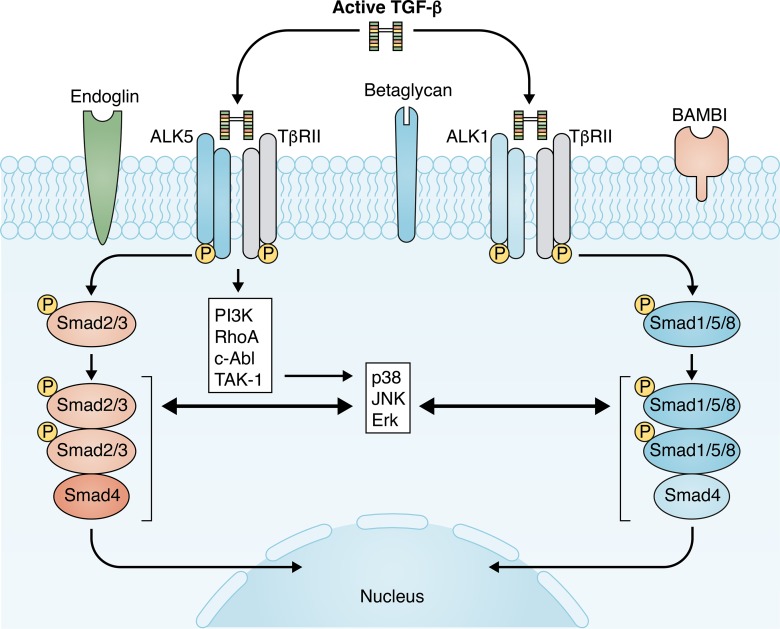Figure 3.
TGF-β signaling pathways in tissue fibrosis. TGF-β stimulates a matrix-preserving transcriptional program in fibroblasts by activating Smad-dependent and non-Smad pathways. TGF-βs bind to TβR complexes, comprising a single type II receptor (TβRII) and two forms of type I receptors (ALK5 or ALK1). ALK5 activates Smad2/3, whereas ALK1 activates Smad1/5/8. Although the role of the TβRII–ALK5–Smad2/3 axis in fibrosis is relatively well established, the potential significance of ALK1-Smad1/5/8 remains unclear. TGF-β–mediated activation of non-Smad cascades may also contribute to the fibrotic response. R-Smads exhibit an extensive network of interactions with non-Smad pathways. Fibrogenic TGF-β signaling is also modulated through accessory receptors, such as endoglin, betaglycan, and BAMBI. The complexity of TGF-β signaling pathways, the extensive cross-talk with other signaling networks, and the variable expression of coreceptors depending on the differentiation state of the cells and the microenvironment may explain the context-specific in vivo actions of TGF-βs.

